Shedding light on a new breeding location, a new fall route, wintering site and all that in between

Funding provided by individual donors and TC Energy
As November winds down that inherently means that migration is nearing its end and so it is time that we share some of the great data we have received from some of our newly tagged Red-tailed Hawks. Over the past two years we have learned a great deal about where this population breeds, winters and the migratory routes that they use in unprecedented detail. With that being said, every year we learn something new and to me that is one of the most rewarding parts of this research. Now, onto some individual updates!
Cricket
Cricket is arguably the most exciting bird of the 2023 MSRW cohort, since he is the first dark morph we have tagged in the Straits. As many birders are aware these dark morphs occur in low frequency in the East, so it has long been wondered where these birds breed and to which sub-species they belong. Are they Northern i.e., abieticola, or do they originate from the West and belong to calurus? We now have strong evidence supporting that Cricket bred in Northern Manitoba this summer, which suggests that these dark morphs do belong to abieticola and this subspecies is indeed polymorphic. See Bryce’s blog here for more information on this and future work involving Cricket and other dark morphs.
Even more, we have now documented breeding sites in Manitoba, Ontario and Quebec for Red-tailed Hawks that pass through the Straits, and in case you are wondering, YES! Cricket did use the Straits again during fall migration. Currently, Cricket is in southern Michigan.
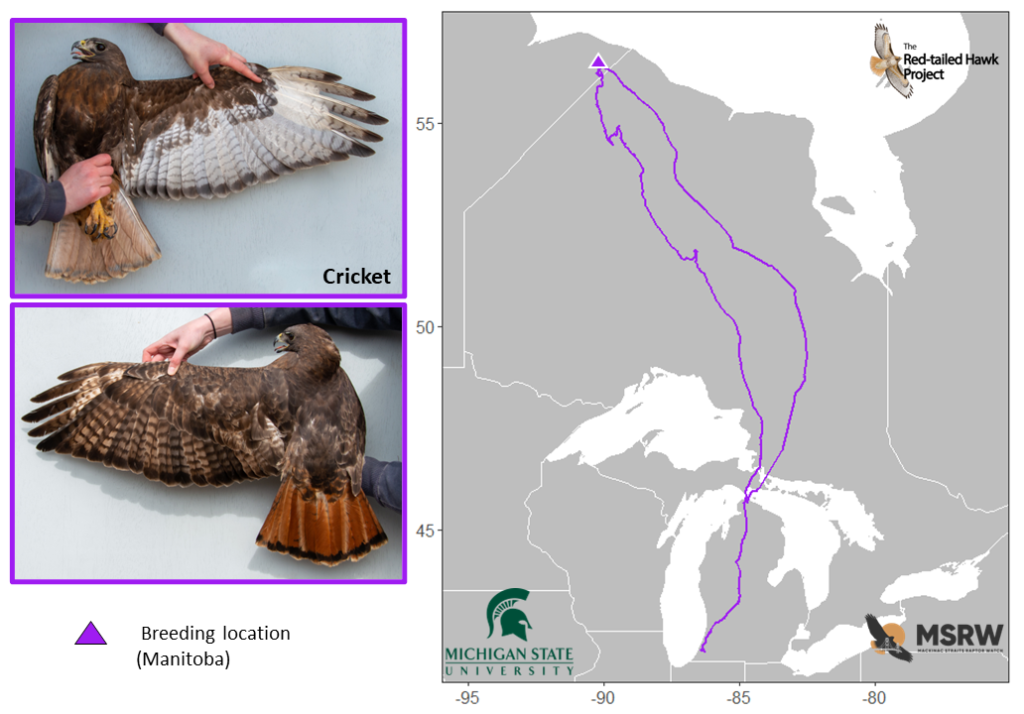
Carlile
A lighter marked abieticola that joined the 2023 cohort. Carlile was one of the first birds tagged this past spring and his phenotype is quite common for the majority of adult Red tails that we see passing through the Straits. This summer it looks like Carlile bred in Pukaskwa Provincial Park on the North Side of Lake Superior. He then started migrating on November 4th and once again passed back through the Straits. Now, the exciting news, after Carlile spent about a week south of Indianapolis, I assumed this is probably where he’d end up wintering but to my surprise Carlile continued south and currently is in Alabama! Previously, Lexington Kentucky is the furthest south we have seen birds winter.
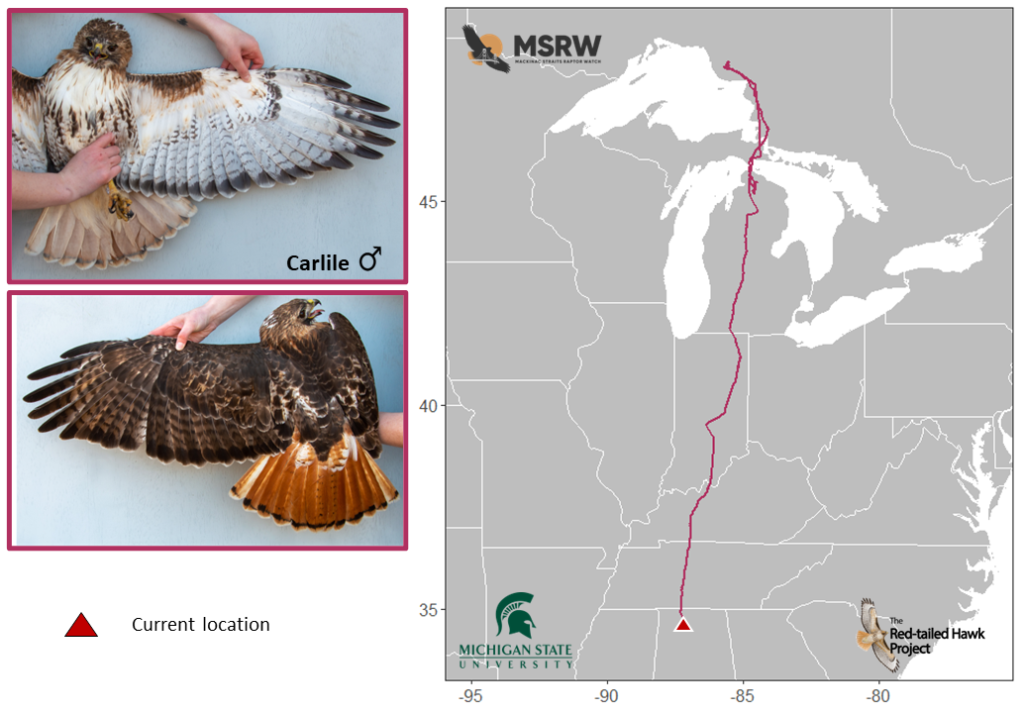
Heathcliff
Just like in 2022, we once again wanted to tag some younger adults (2- or 3-year-olds) in the hope to better understand at what age do Red-tails get recruited into the breeding population. Heathcliff is one bird that we are hoping will help answer this question. Heathcliff is a lighter marked abieticola that was a 2-year-old bird at the time of tagging this past spring.
Once Heathcliff checked in this fall, we saw that this bird wandered around Northern Ontario and even explored Manitoba for a few days this summer before settling in a central location in Northern Ontario (See map). Given the time at which Heathcliff settled this summer suggests that this bird did not breed given the time of year. However, we hope that next year Heathcliff will return to this location and provide more data regarding breeding behavior.
Heathcliff also shared a great fall migration route as he is the first bird we have documented migrating around the west side of Lake Superior and past Hawk Ridge Bird Observatory. This has been a migration route we have wanted to document during fall migration since the beginning of this project. We now have seen our birds use 4 general routes in the fall to avoid the Great Lakes. Heathcliff is in Kentucky at the moment so we can’t wait to see where he actually settles this winter.
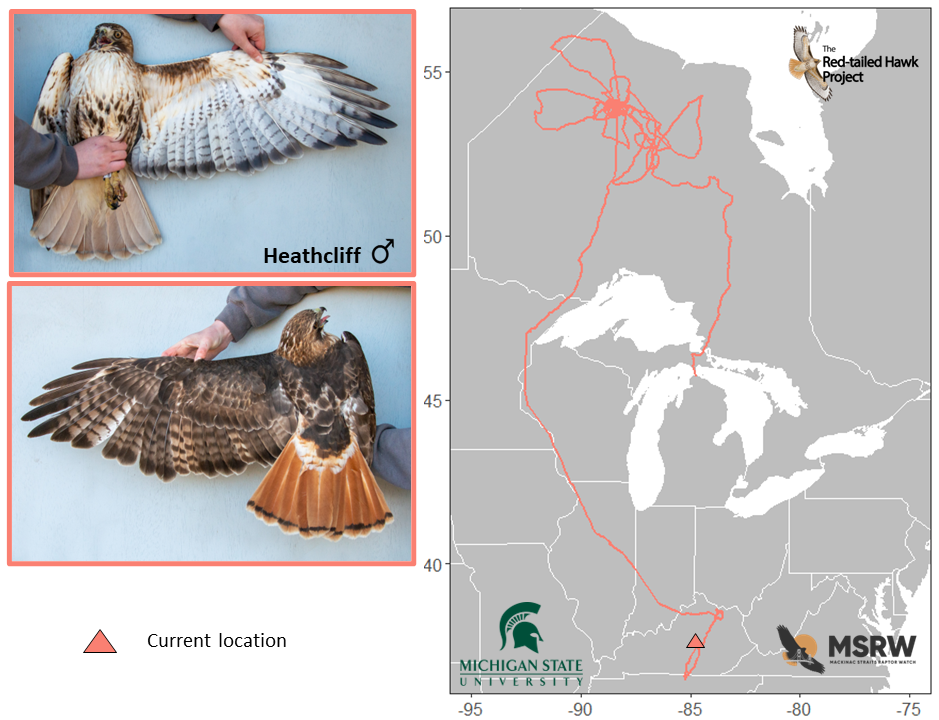
MH2
Unlike Heathcliff, MH2 was a 3-year-old bird at the time of tagging, and we believe this bird is a female based on size. Phenotypically this bird resembles a more classic borealis or eastern Red-tail. In other words, a bird that we wouldn’t expect to be migrating through the Straits. That being said, we were excited to see where she would breed. After checking in routinely all summer she too seemed to exhibit this wandering behavior around Northern Quebec and at one point she was ~ 170km from Newfoundland. As it turns out she never settled until August which supports that she probably did not breed given the amount of time it takes for chicks to hatch and fledge. This fall she passed back through the Straits and is currently in Kentucky, North of Lexington.
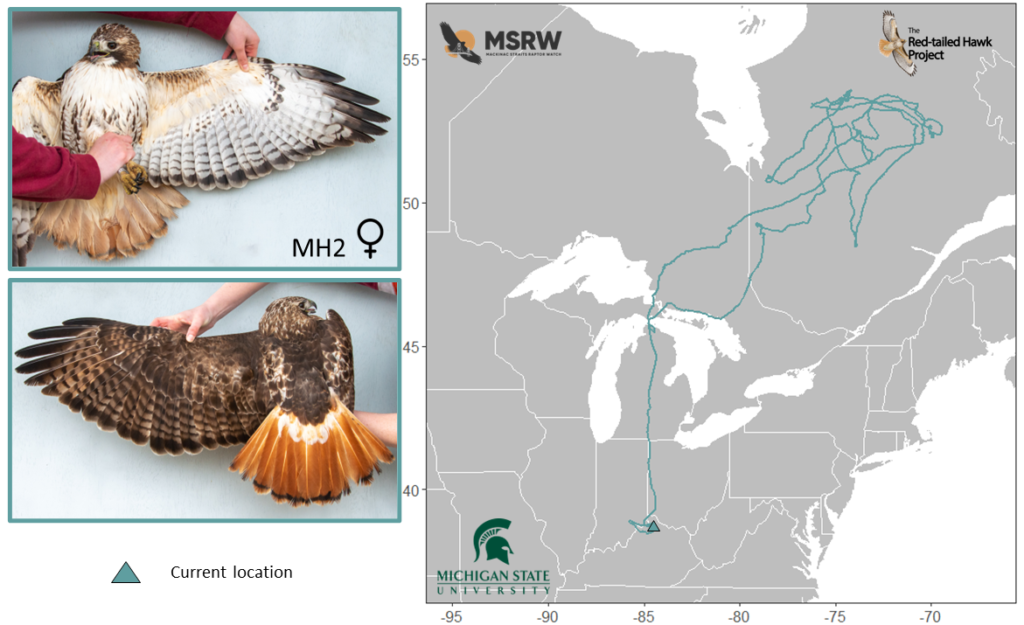
Mackinaw
Finally, lets give an update on Mackinaw. Mackinaw was tagged in 2022 as a 2-year-old bird and what we saw during the first summer was that typical wandering behavior that we have seen with other 2-year-old birds. This summer, Mackinaw, now a 3-year-old returned to the same general location in Northern Quebec but the total area he used drastically decreased (See Map) which makes us think he possibly secured a territory. However, it is hard to tell if he bred but we can’t rule it out. This is something me and my collaborators at the Red-tailed Hawk project hope to figure out based on this fine-scale summer data. Mackinaw as of his last check in (hawk icon) appears to be heading back to his winter territory in southern Ohio.
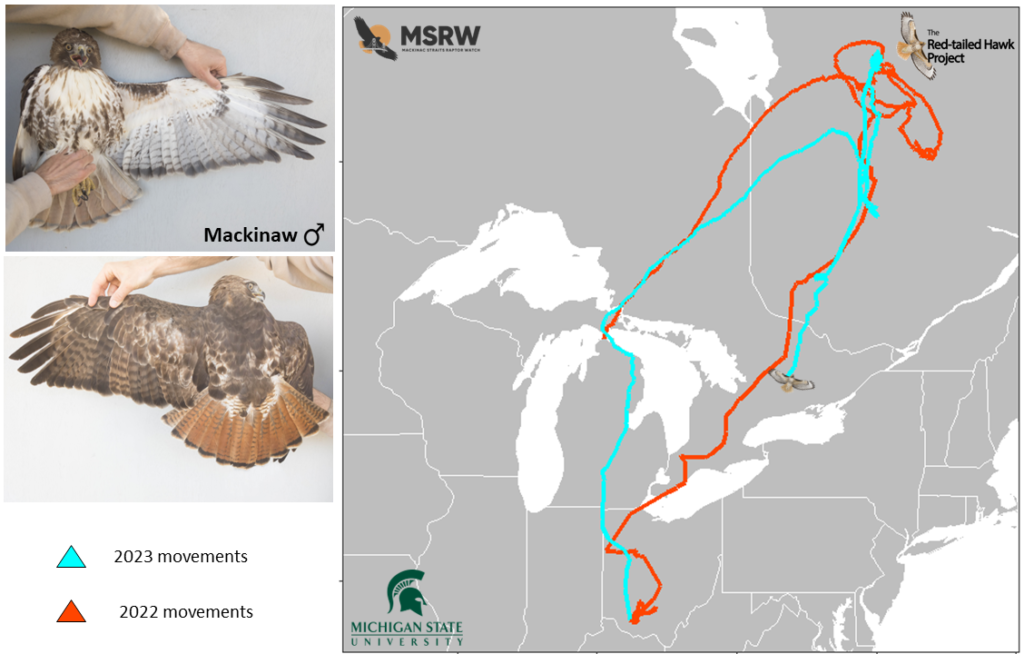
I’d also like to personally thank all the support from various individuals and organizations that have made this research possible, including the build better grant from TC Energy. Stay tuned for more updates and new manuscripts in 2024!


